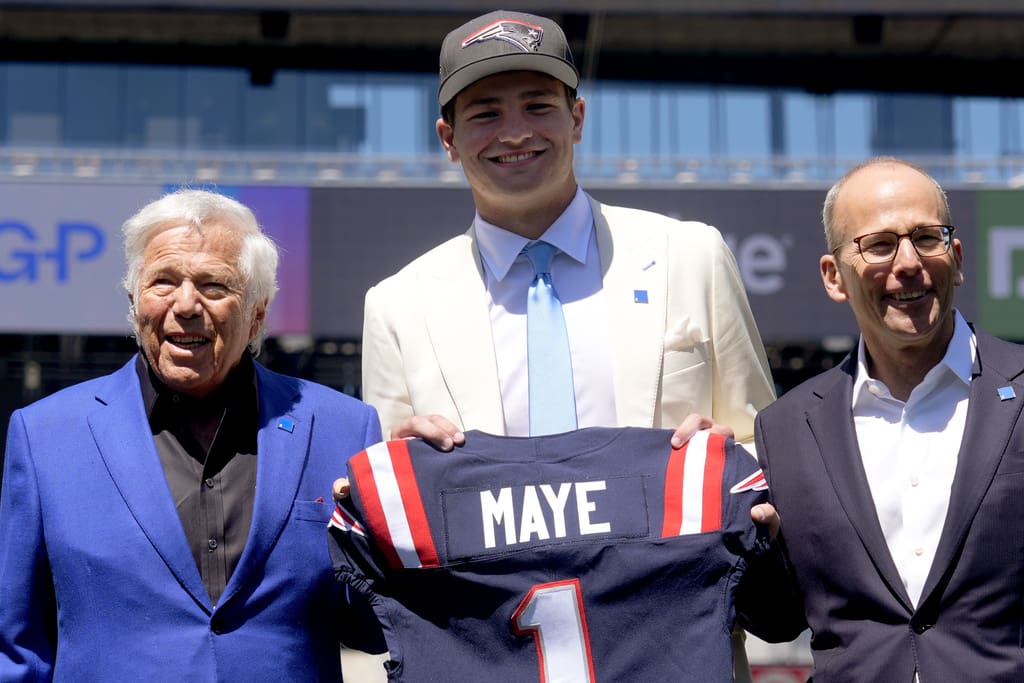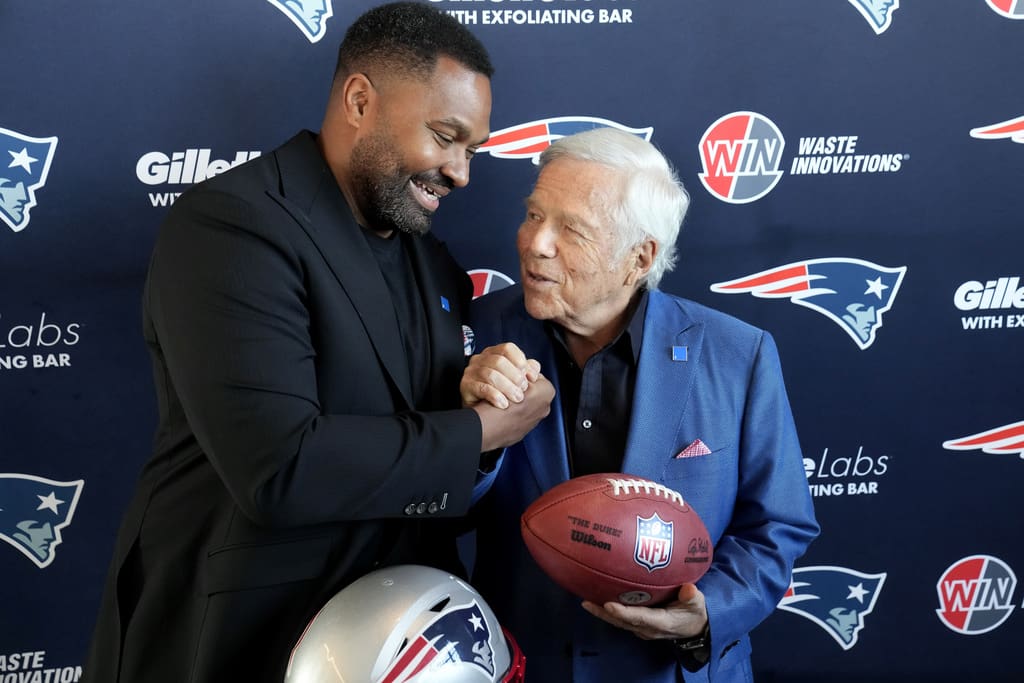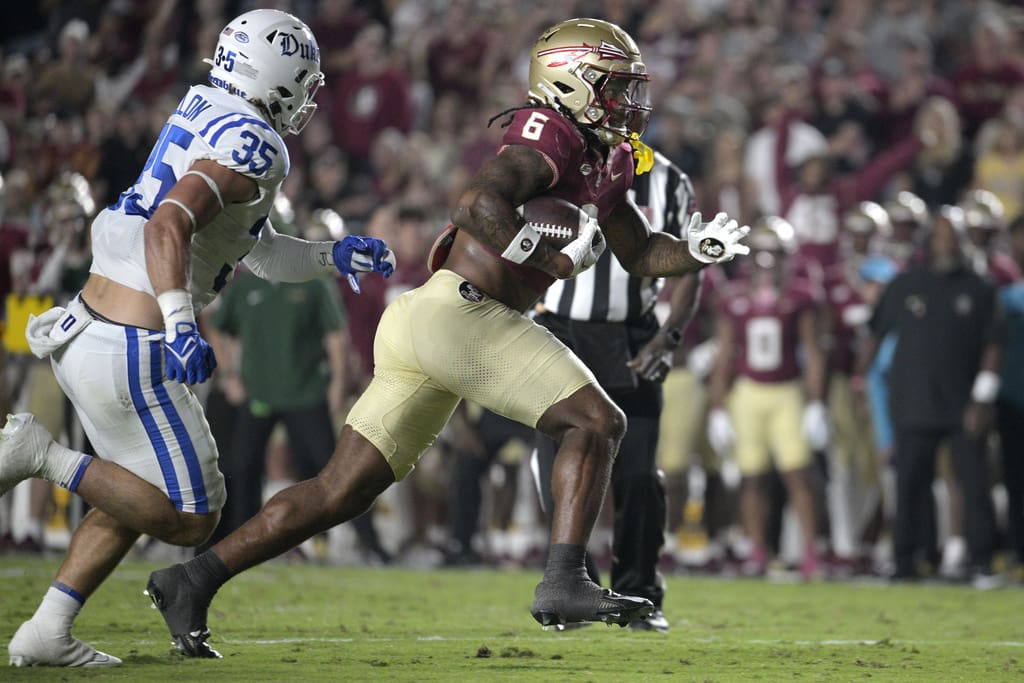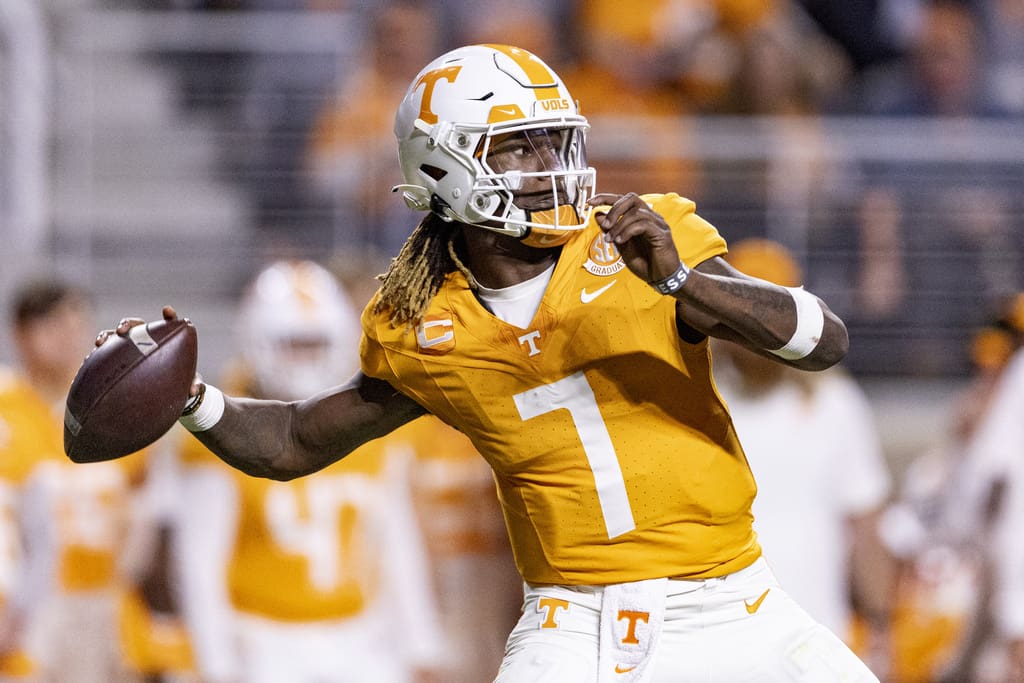Boston Bruins
Colageo: Boston Bruins explore Morgan Geekie’s upside
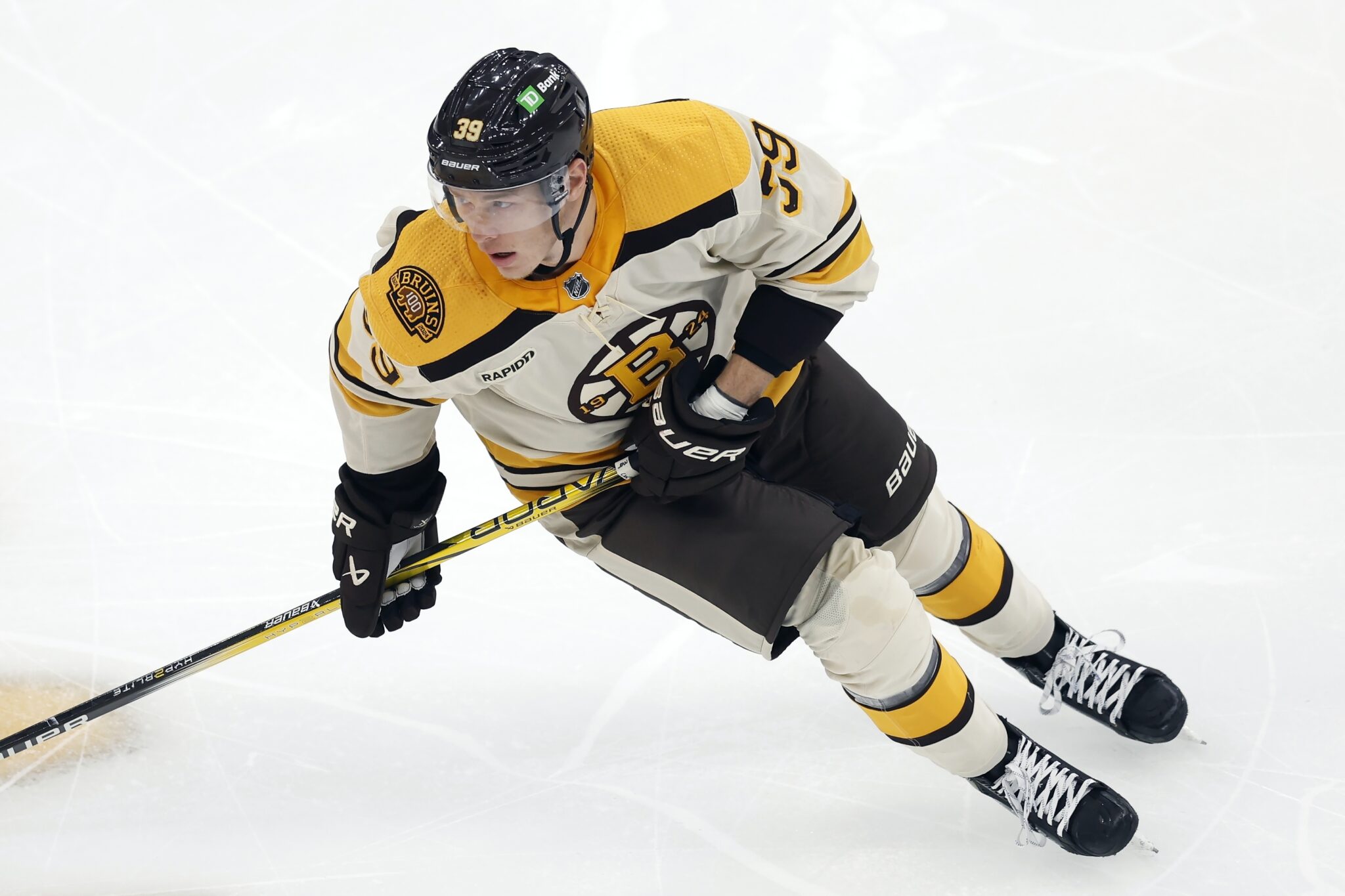
Boston Bruins Coach Jim Montgomery’s in-game promotion of Morgan Geekie from fourth-line right wing to top-six center after they lost Pavel Zacha to an upper-body injury early in Saturday’s 5-3 victory over the Arizona Coyotes provided, under duress, an encouraging glimpse into what even a small measure of old-school physicality can do for the Bruins’ attack.
Originally charted alongside 11-minute men John Beecher and Oskar Steen, Geekie wound up skating 17:31 (15:42 even strength and 1:35 powerplay) while centering David Pastrnak and Jake DeBrusk on Boston’s reinvented forward lines.
Eleven minutes after big winger Lawson Crouse made the natives restless by cutting Boston’s lead to 4-3 just 3:20 into the third period, Geekie took the puck to the Arizona net. His aggression opened space for Pastrnak to follow and make a deft shift to his forehand for the latest in his catalog of brilliant finishes, his second goal of the game and 16th of the season making it 5-3 with 5:31 remaining in regulation.
The Boston Bruins held on from there, something that has not happened routinely.
Geekie finished with three hits, tying Charlie Coyle for third behind Beecher and Trent Frederic (four each). Not only did Geekie win eight of 12 faceoffs, he added an element to the attack, more specifically that Terry O’Reilly thing.
The puck winds up in his skates and it seems he might lose it, but somehow it stays with him as he crashes and bangs his way forward. There is an old-school knack involved. The great Wayne Cashman had it. The puck followed them as though it knew O’Reilly or Cashman would not be pleased had it not.
“My family played a whole bunch of sports growing up. I think it all kind of translates a little bit,” said Geekie. “When (the puck) gets in my feet, I’m not really thinking about making a hockey play, I’m just trying to corral it and do stuff like that.”
Geekie’s ability to thrive in congested, tight quarters would probably make him a decent Boston driver. It makes him successful in the traffic areas of the hockey rink.
“Just being an athlete is the best way to put it,” said Geekie, who was born in Strathclair, Manitoba, approximately 150 miles west of Winnipeg. “I loved baseball growing up, my number one. Hockey, this isn’t a bad second job.”
A third-round pick of the Carolina Hurricanes in 2017, Geekie was plucked by Seattle in the 2021 expansion draft, but GM Ron Francis did not qualify him last summer, opening the door for the Bruins to see if they could become the team that realizes the 25-year-old’s upside.
It has taken some time, but the reason Sweeney invested twice his average 2023 free-agent offer and term (two years, $2 million) has begun to emerge; the Bruins identified the 6-foot-3, 200-pound forward as a versatile, sturdy presence who can play up in the lineup, and Saturday we saw it.
“I’m just trying to fit in wherever. Obviously, we’re a great team, we just have some details we’ve got to iron out,” said Geekie after the win against Arizona. “I’m happy to be here and I’m happy to jump in anywhere that I can.”
Geekie will be a restricted free agent in July 2025.
Since their three-game crash and burn, the Boston Bruins have made a concerted effort to play more defensively responsible hockey, especially with the lead, but note that Boston defensemen remain activated and pursuant toward opportunities to join the attack.
On Saturday against Arizona, this front-footed approach included the third pairing of Mason Lohrei (15:05 total, 12:18 even strength) and Kevin Shattenkirk (14:36 total, 11:30 even strength).
Asked to comment on their sustained aggression, Shattenkirk took Boston Hockey Now’s question as an opportunity to blame himself for Michael Carcone’s unassisted goal that cut Boston’s lead to 3-2 early in the second period.
“The second goal there, I was a little too aggressive, jumping there and kind of waiting for a play to happen and it didn’t,” said Shattenkirk. “I think, what (an aggressive posture) does in turn is, when pucks do turn over and we’re thinking aggressively offensively, we seem to be more in guys’ faces because we’re gapped up. It sets us up for them not having enough time and space to make plays off the rush.”
Approaching 35 (January 29), Shattenkirk brings a smart stick and overall rinkmanship whose skills remain useful into his athletic back nine because of his intellect and savvy.
In a preseason conversation, the journeyman defender was admittedly new to Montgomery’s tightly wrapped, puck-support breakout but noticed right away that the Boston Bruins are challenged to “get to our system” when opponents play keep-away by rimming the puck hard around the boards in Boston’s end of the rink. The Florida Panthers were masterful in the spring, and the half of the NHL that has faced the Bruins in 2023-24 have tried their best to copy-cat Florida’s playoff effort.
Asked just beyond the quarter pole of the schedule to update his take on the Boston Bruins and what makes them tick, Shattenkirk suggests that the Bruins’ best defense has been a good offense.
“I think that we’re showing that we’re a really good forechecking team so … as cliché as it is to say, just putting pucks in and getting on the hunt. Our forwards seem to have great instincts there and create a lot of turnovers and pressure on defensemen, and from there I think that builds the rest of our game,” said Shattenkirk. “Even when teams do have an opportunity to come out of their zone, we’re in better structure at that point.
“Our gaps (the space between Boston’s defensemen and forwards) are better, as we’re forcing dumps and breaking out pucks well. It’s more when we’re a little bit loose and trying to make too many plays and turning pucks over that we seem to get stretched out and get away from our game a little bit.”
Another thing the Boston Bruins are doing better amidst this period of resurgence is simplify toward the end of shifts when energy is depleted and turnovers are more dangerous.
“Making those plays starts with the veterans setting the example … and the young guys just understanding that the last five, 10 seconds of the shift when you’re tired and you have a puck on your stick, you need to make sure that you bear down and make a hard play and set up your teammates for the next shift in the right way,” said Shattenkirk.
Cute babies are always a hit on the videoboard, but if I owned a NHL team, I would not allow small children in the danger zone, and by that I mean the seats just above the side glass, close enough to the rink to intercept pucks flying at high speeds and at low trajectories.
I liken the risk to a dangerous intersection without traffic lights. Nothing ever happens until tragedy strikes.
In the fall of 2002, a young girl at game in Columbus was struck in the head by a shot tipped by a defenseman over the end glass. The puck also hit a man and a third person. Struck first, the girl was reportedly in a state of recovery days later when her health took a sudden turn for the worse. It was learned too late that she had sustained an undiagnosed, whiplash-related injury and suffered internal bleeding that went unchecked.
Since then, every rink in North America where professional hockey is played added netting above the tall glass to protect spectators. What many community and college rinks also do is wrap that netting around the sides of the rink.
Given the trajectory of pucks intentionally banked off the glass by defending teams, it is actually far more dangerous to sit five to 10 rows up on the side than it is on the end. Historically, pucks going over the end glass were usually ducked, but a puck soaring over the side glass can miss five people and still hit someone else, and those fans in the most expensive seats tend to get caught talking and not watching.
What happened 21 years ago in Columbus is a tragedy that took over a half century of slapshots to occur and brought about an appropriately dramatic response. It is only a matter of time before the same thing happens on the side of the rink. It is definitely not a place for a small child, much less babies with their soft, developing skulls.
Finally, TD Garden hockey capacity is officially up from 17,565 to 17,850. This is due in small part to the sneaky addition of a seat to some rows in loge sections but more so the complete overhaul of the ninth floor, the bird’s eye view originally designed uniformly with a shelf and loose chairs.
Now there are augmentations, rows hanging down, rows up top, no more than three rows in any one place, but TD Garden’s “legendary transformation” has for the most part drawn rave reviews. Walls were knocked out and replaced by views of the city to the east and the south.
Unlike Madison Square Garden’s renovation of a decade ago, the foundational architecture of the now-28-year-old arena in Boston has not changed, but the makeover that began during the Bruins’ run to the 2019 Stanley Cup final has completely changed the feeling of the building and the game experience.
From fans to pro scouts to media, TD Garden has gone from what Mike Milbury (coaching the Islanders on opening day of the Fleet Center) called “another building” to one of the NHL’s premier attractions.
I will forever cherish the hockey cathedrals of days gone by, especially the old Boston Garden, its overhanging balconies and unmistakable character, but even a geezer like me enjoys living in this present.









